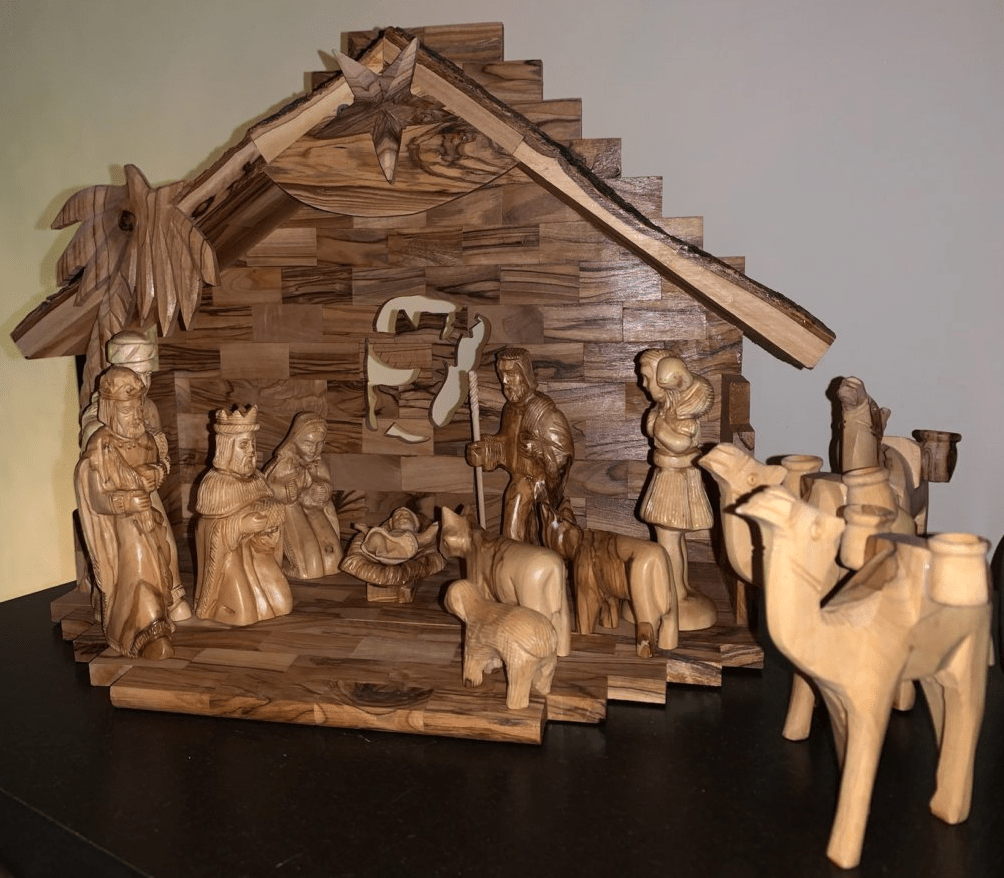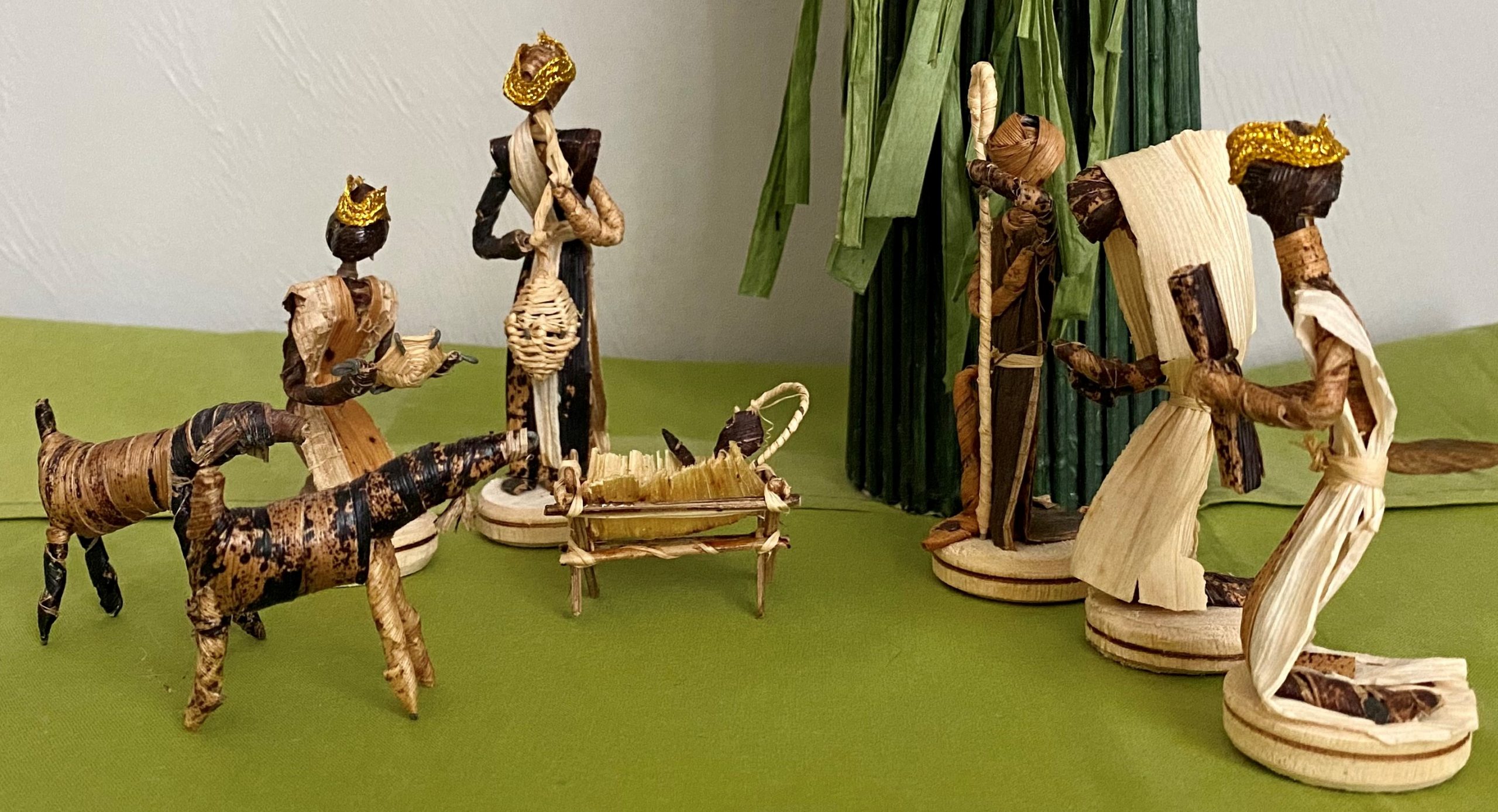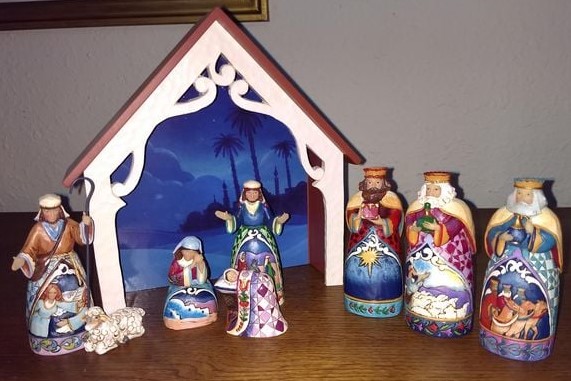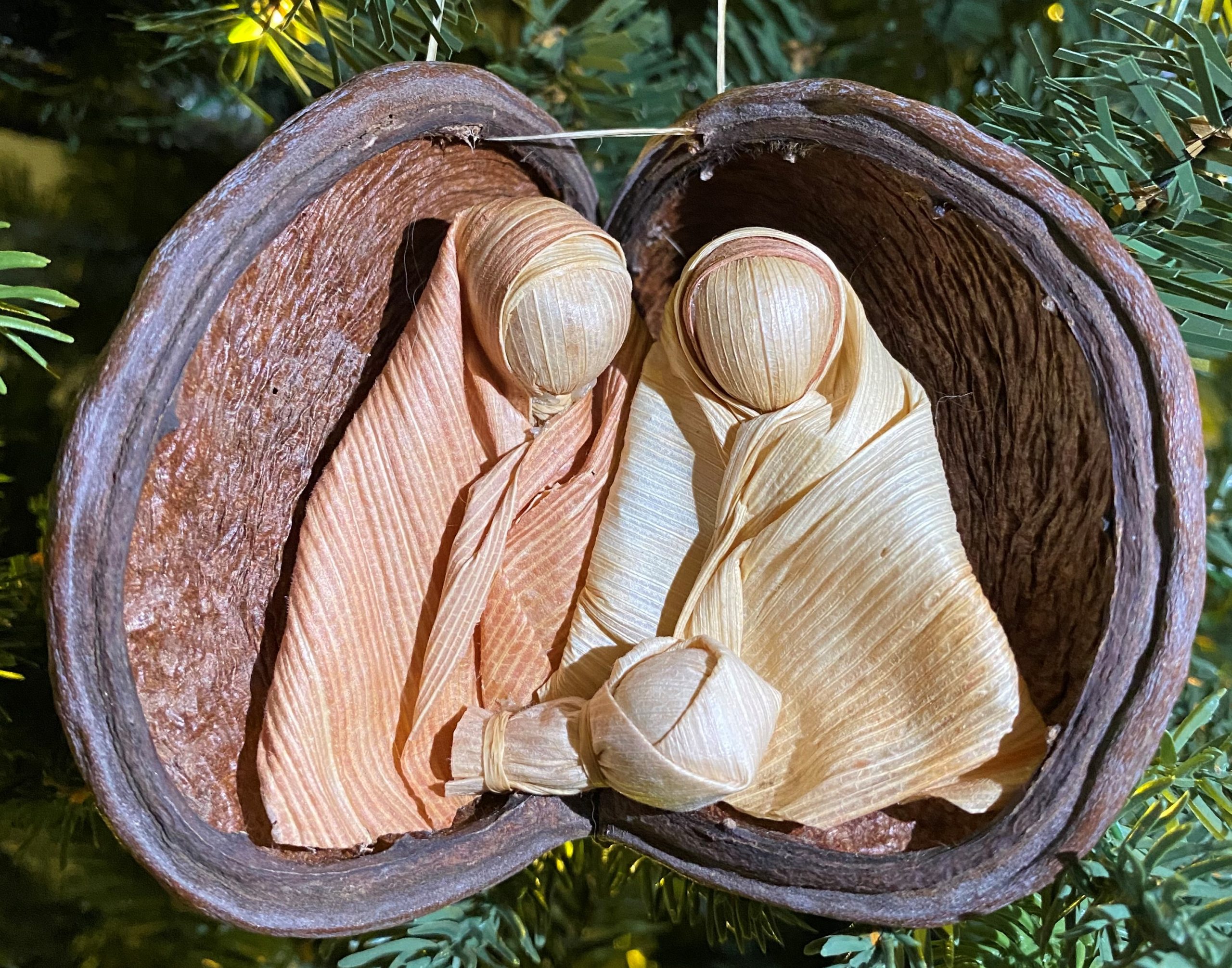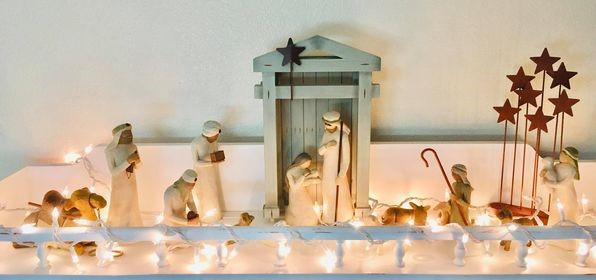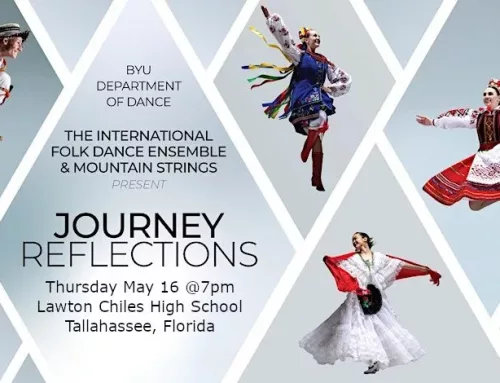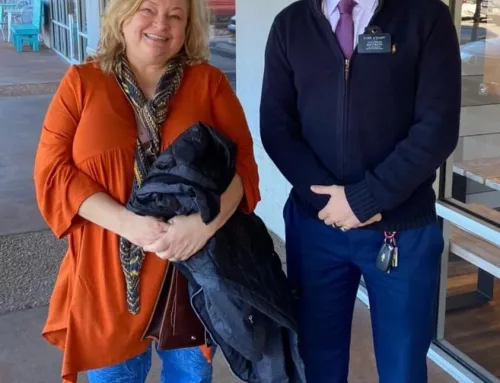Estimated reading time: 7 minutes
TALLAHASSEE – Area residents in northwest Florida and southern Georgia responded to a LightTheWorld.org holiday promotion by The Church of Jesus Christ of Latter-day Saints that asked families to submit photos of their favorite nativity scenes.
The promotion was addressed to Facebook users in the church’s Tallahassee Stake, which includes seven congregations in Tallahassee and congregations in Thomasville, Cairo, Quincy, Madison, Perry, and Crawfordville.
Submissions were sent to the Tallahassee Stake News & Events website and Facebook page.
Erin and Josh Matson of Tallahassee submitted a photo of a nativity they acquired in Jerusalem.
“We were so excited to have the opportunity while we were living in Israel to pick out a special nativity set made from olive wood from Palestine. Although we lived a couple of hours north of Jerusalem, we made a special trip to Jerusalem for Christmas and chose our nativity on Christmas Eve. We then made our way to Bethlehem and had the unique experience to be able to walk the streets and be right in the area where our Savior Jesus Christ was born,” they said.Jean Sims of Crawfordville shared the history of her prized nativity set.
“About 48 years ago a friend had a small ceramic business in her home, and I made my nativity there,” she said. “My mom saw and wanted one, but she wanted hers to look like wood. Then my mother-in-law wanted one that looked like porcelain. I made both the set they requested.”
It was not an easy task. Sims had small children then and was quite busy, so taking the time to paint and fire two sets of numerous 5”-7” figurines was a labor of love.
“It was well worth it,” she said, noting that both nativities have been enjoyed for many years. Family members were sad when her mother’s nativity was lost after her death.
Larissa Knudsen of Tallahassee shared several photos and discussed the very personal meaning each nativity set has.
“Our kids love our nativities because they grew up with them,” she said. “We didn’t emphasize Santa Claus—we wanted our kids to think about Jesus when they thought about Christmas. And I’m all about simple. Raising five children in a small house, you don’t have a lot of space and you keep it simple.”
To that end, the Knudsen family always made a Christmas tree and several beloved nativities the focal point of their decorations.
One cherished set is of fine bone china and depicts Joseph, Mary, and Baby Jesus. “It came from my maternal grandmother the year Gary and I married,” she said. “Some years later my paternal grandmother gave us a glazed ceramic set that she made.”
Another nativity was a gift from one of their daughters. Knudsen said it was created in Ghana of natural materials, sweetly reflecting the culture in which it was crafted. A couple of small sets—also made of natural materials like corn husks and seed pods—hang on her tree and were acquired during a visit to her sister in Hungary. Yet another beautifully unadorned nativity was a gift from her mother.
“Fancy nativities are gorgeous,” she said. “But humble nativities are my favorite because they represent the purity of the Gospel and the Savior’s love of all people, and of my love for Him.”
Cindy Clawson of Tallahassee shared several photos and discussed the personal meaning each nativity set has.
“I just love nativities,” Clawson said, adding that most of hers are cherished gifts or were inexpensive purchases. “A couple of the kids gave us one of the nativities—a unique and beautiful one that has colorful painted details on all the figures. We also have a Central American fabric tapestry that hangs on the wall.
Our latest addition is a Fisher Price nativity set that our 2-year-old granddaughter can play with.”Years ago, she said, when four of their six kids married within four years, she and her husband decided they would get each one a nativity early in their marriage. “We thought it would be a sweet and important thing to add to their new home.”
Discussing her fondness for nativities that reflect diverse cultures, Clawson said, “All my life, I have had an eye out for things that were different. I love nativities that are from around the world—in unusual styles, materials, and mediums.”
Amy Romney of Tallahassee discussed the nativity tradition in her family.
“I’ve had our nativity set over 20 years,” Romney said. “It was bought before I got married, but it became our family nativity, and we put it out every year.”
She described another, much smaller, nativity that hangs on the Christmas tree. “My mother-in-law served a mission in Laie, Hawaii, working at the Polynesian
Cultural Center,” she said. “She sent us this little nativity with figures of Mary, Joseph, and baby Jesus set inside a coconut shell. It has special meaning because she was serving a mission at the time.”Romney noted that nativities are especially important symbols in our day. “So much of Christmas is commercial,” she said. “I like to have nativities displayed in our home to focus on the Gospel and on the Savior. It helps us teach our children about the true meaning of Christmas and the Savior’s birth.”
Nicole Bisping of Tallahassee shared her family story.
The main nativity displayed by her family was a gift from her husband. “He bought it for me piece by piece,” she said, noting that he added to the set over a
period of about five years.This lovingly acquired nativity takes center stage in the Bisping family Christmas celebrations. “We make sure the nativity scene is put up first,” she said, “before the tree or any other decorations. The focus is on Christ. The rest is all fun and yummy tradition, but the thing we emphasize is the birth of our Savior.”
Nativity history
One school of thought is that Saint Francis of Assisi created the first re-enactment of the holy birth of the Savior in 1223. Part of a Christmas Eve Mass in Greccio, Italy, he presented a living nativity scene with animals and a manger. The dramatic and inspiring event so thoroughly caught the imagination of others that, within a century, most churches in Italy featured living nativity scenes as part of their Christmas observances.
As statues began to replace people and animals, the practice became increasingly popular. Eventually, the figures were created on a smaller scale to be displayed in homes.
Today, many people collect nativities themselves or pass treasured sets from generation to generation.


